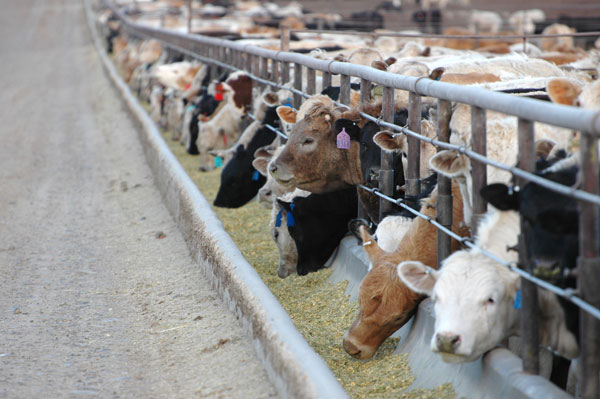Estimated cattle feeding returns finally started turning positive in September after 29 consecutive months of losses. But, analysts with the Livestock Marketing Information Center say losses could resurface as early as next month because of the high prices feedlots must pay for calves and feeder cattle.
November 16, 2013

Finally.
In September, cattle feeders started turning a profit after more than two years of losses on average. Unfortunately, profits may be a short-lived exception.
“Looking ahead, even with the recent rapid decline in feedstuff costs, cattle feeding returns will be tempered by record high feeder cattle costs,” say analysts with the Livestock Marketing Information Center (LMIC). “Breakeven sales prices for steers placed in recent months have surged. Red ink is expected to return as soon as December of this year. Further significant upticks in heavyweight feeder cattle prices will likely require at least parallel increases in fed cattle prices.”
This is based on the estimated monthly cattle feeding returns, a benchmark LMIC has kept since the mid 1970s. Those returns started turning red in May of 2011.
“The biggest losses in history were recorded on closeouts for June 2012. Most estimated closeouts finally went positive in September of this year and the LMIC’s calculations were well into the black in October,” LMIC analysts say. “These 29 consecutive months of red ink was the second longest time period in the LMIC monthly series.”
The folks at LMIC emphasize constructing a benchmark for cattle feeding returns is becoming increasingly difficult because the business has changed significantly in just a few years.
For example, the LMIC benchmark assumes a beef type steer weighing 750 lbs. placed in a Southern Plains feedlot, fed a standard corn-based ration, fed on a group basis, achieving average performance and sold in the cash market.
In contrast to these assumptions, LMIC analysts explain, “Increasingly, cattle are not custom-fed and the feedlot stage involves: purchasing animals well before they enter the feedlot, sorting animals often several times, using beta-agonists, using creative feedstuffs, sophisticated risk management tools, managing animals for specific markets, and the list could go on.”
You might also like:
15 Best Winter On The Ranch Photos
Readers Share Bred Heifer Prices In Their Neck Of The Woods
Share This --> Infographics Highlight Beef's Story From Gate To Plate
Simple Steps To Up Your Cow Herd's Profitability
How To Treat Hoof Cracks In Cattle
Do Beta-Agonists Figure Into Fatigued-Cattle Syndrome? Dan Thomson Says Yes
About the Author(s)
You May Also Like





